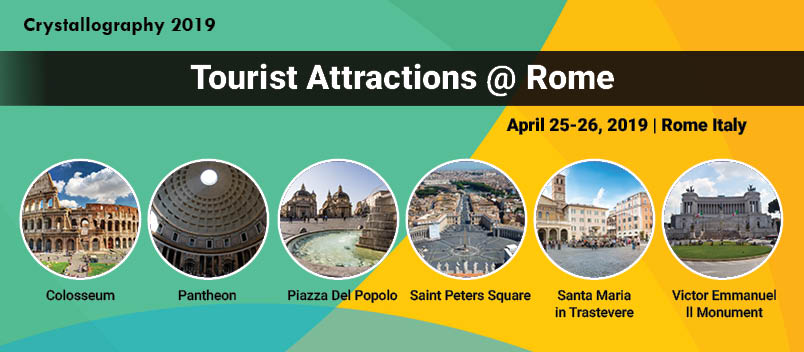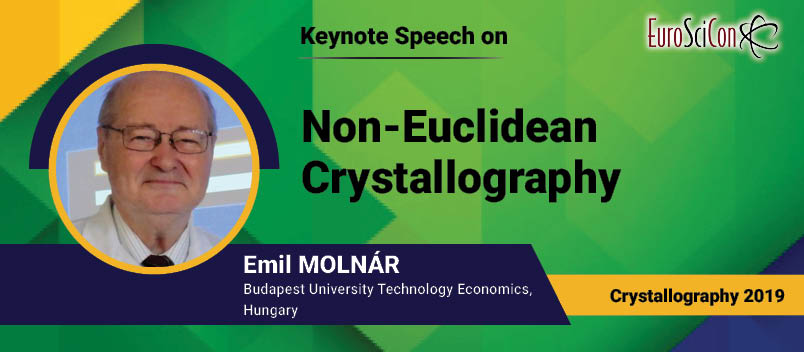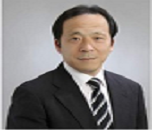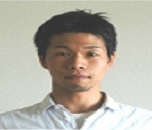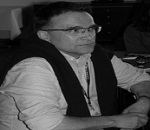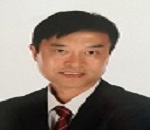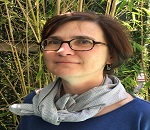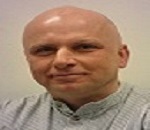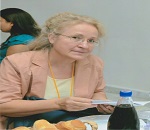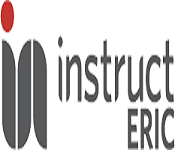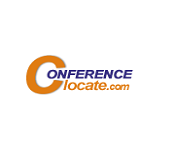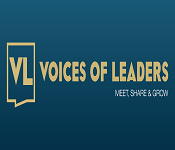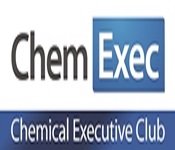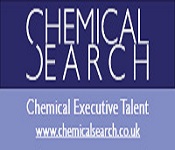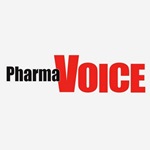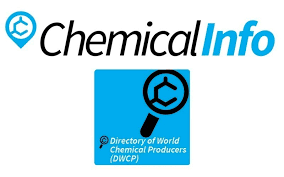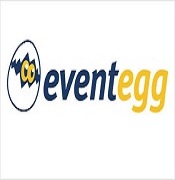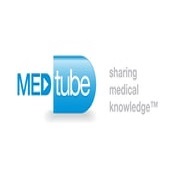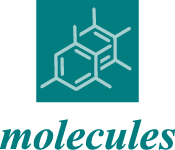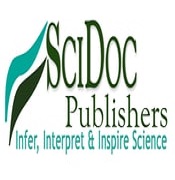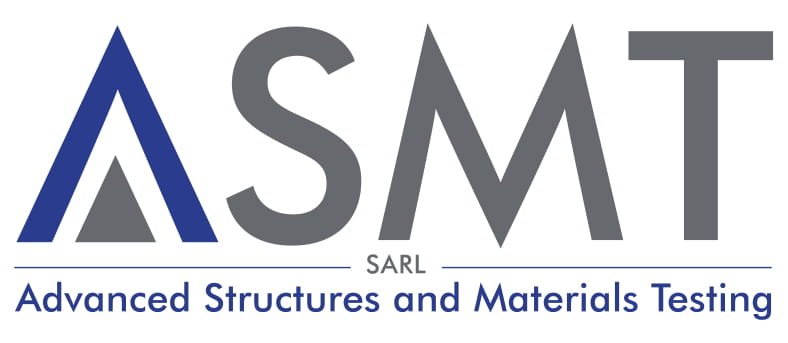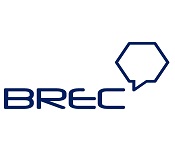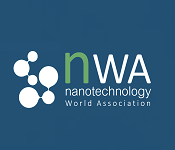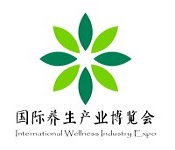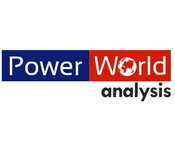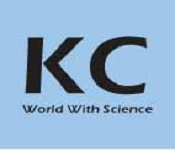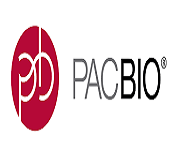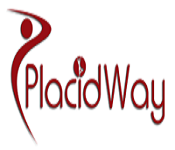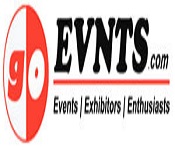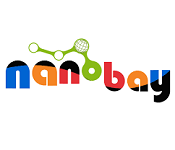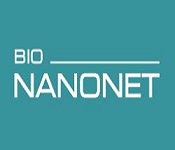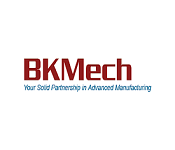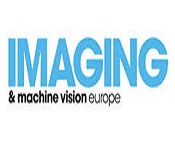Crystallography 2019
About Conference
About Conference
EuroSciCon invites all the participants from all over the world to attend 4th Edition of International conference on Advanced Spectroscopy, Crystallography and Applications in Modern Chemistry during April 25-26, 2019, Rome, Italy which includes prompt keynote presentations, Oral talks, Poster presentations and Exhibitions.
Crystallography 2019 provides a perfect symposium for scientists, engineers, directors of companies and students in the field of Materials science, Physics, Chemistry and Structural Biology to meet and share their knowledge. The theme of the conference is "Exploring the Novel Enhancements in the field of Modern Chemistry - Crystallography and Spectroscopy". The scientific program paves a way to gather visionaries through the research talks and presentations and put forward many thought provoking strategies. It provides a premier technical forum for reporting and learning about the latest research and development, as well as for launching new applications and technologies.
This event will focus on Application of Modern Chemistry, Spectroscopy, Advanced Spectroscopy and variety of Crystallography topics including Protein crystallography, Crystallography in Biology, Chemical Crystallography, Crystallography in Materials Science, Electron crystallography, Crystallography Applications through invited plenary lectures, symposia, workshops, invited sessions and oral and poster sessions of unsolicited contributions.
Maximize your personal involvement, engagement by getting together on April 25-26, 2019 with an interactive discussions and workshops at the conference, you will feel free to reach out and share your thoughts to continue your lifelong learning and build on the skills that make you successful.
Target Audience:
- Eminent Scientists from Materials Science and Crystallography
- Chemistry Research Professors
- Junior/Senior research fellows from Universities
- Directors of companies of Spectroscopy and Mass Spectrometry
- Members of different Materials science and Spectroscopy associations
- Crystallography Experts
- Spectroscopy Experts
Sessions/Tracks
Track 1: Crystallography
The Science of Crystals or, Crystallography represents the nature of a crystal and mostly their Atomic Structure, is very crucial for most of the practicing Scientists whose research work relates with materials and their structures. For instance, Crystallography or, Crystal Structure is being used by Chemists to discover and synthesized new chemical compounds and to change its physical properties. Crystallography is used by most of the Pharmaceuticals and drug discovering companies to make useful modifications in drugs. In addition, Crystallography helps to research into how drugs target proteins, the molecules that are essential for living organisms to function properly. Materials Scientist depends on Crystallography to study new materials having many Industrial applications. Crystals of Lithium niobate are used in the telecom markets.Crystallography is a scientific discipline in its own right. Similarly, Crystallographers have their own international union and their own systems of Nomenclature and Notation. Crystallography can be found in all science aspects like Chemistry, Physics, Biology, Materials science and Mathematics, as well as in many industries.
- Small Molecule Crystallography: Novel Structures and General Interest
- Computational Crystallography
- Supermolecular Crystallography
- Polymer Crystallization
- Nano Crystallography
- Electron Crystallography
- Crystallization
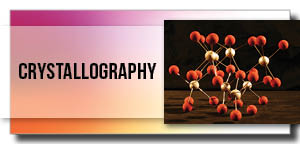
Track 2: Chemical Crystallography
Chemical Crystallography is a use of diffraction methods to the investigation of basic science. An incessant reason for existing is the recognizable proof of common items, or of the results of manufactured science tests; however point by point sub-atomic geometry, intermolecular collaborations and supreme designs can likewise be considered. Structures can be examined as an element of temperature, weight or the utilization of electromagnetic radiation, or attractive or electric field: such studies involves just little minority of the aggregate. The utilization of single precious stone X-beam diffraction to decide the structure of a concoction compound has been generally delegated 'Substance Crystallography'. The strategies, the exactness in analyses combined with the modem PC contraptions and advances in innovation makes this branch of science an unequivocal supplier of precise and exact estimations of sub-atomic measurements. Structure assurance by powder diffraction, precious stone designing, charge thickness examination and studies on atoms in energized states are the late additional items.
- Engineering of Crystalline and Non-crystalline Solids
- Structure and Properties of Functional Materials
- Metal-organic Frameworks and Organic: Inorganic Hybrid Materials
- Reactions and Dynamics in the Solid State
- Chemical Crystallography: General Interest
- Mounting the Crystal
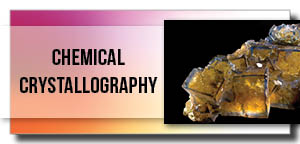
Track 3: Advanced Crystallography
Precious stones are generally connected with having normally grown, level and smooth outer countenances. It has for quite some time been perceived that this confirmation of outside normality is identified with the consistency of inside structure. Diffraction strategies are presently accessible which give substantially more data about the inside structure of precious stones, and it is perceived that interior request can exist with no outside confirmation for it.
- Ions and salts
- Chemical shift interaction
- Functional Crystals
- Organic & Inorganic Crystals
- Metal-Organic Frameworks (MOFs)
- Pharmaceutical Co-crystals
- Porous and Liquid Crystals
- Nano-materials and Nanotechnology
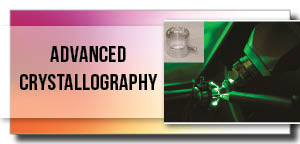
Track 4: Crystallography of Novel Materials
It ought to be obvious that all matter is made of iotas. From the intermittent table, it can be seen that there are just around 100 various types of molecules in the whole Universe. These same 100 molecules shape a great many distinctive substances running from the air we inhale to the metal used to bolster tall structures. Metals carry on uniquely in contrast to pottery, and earthenware production act uniquely in contrast to polymers. The properties of matter rely on upon which iotas are utilized and how they are fortified together. The structure of materials can be grouped by the general extent of different elements being considered.The nuclear structure basically influences the substance, physical, warm, electrical, attractive, and optical properties. The microstructure and macrostructure can likewise influence these properties yet they for the most part largely affect mechanical properties and on the rate of concoction response. The properties of a material offer intimations with regards to the structure of the material. The quality of metals proposes that these molecules are held together by solid bonds. In any case, these bonds should likewise permit molecules to move since metals are additionally typically formable. To comprehend the structure of a material, the sort of particles present, and how the iotas are organized and fortified must be known. We should first take a gander at nuclear holding.
- Early organic and small biological molecules
- Mineralogy and metallurgy
- Metals and Alloys
- Ceramics and Polymers
- Thin films
- Quasi-crystals
- Amorphous Materials
- Bulk Nitride Crystals
- Novel crystallization strategies for XFEL studies

Track 5: X-Ray Crystallography
X-ray crystallography is a method used to determine the properties of a crystal which includes atomic and molecular structure, in which the crystalline atoms cause a beam of incident X-rays to diffract into many specific directions. By measuring the angles and intensities of these diffracted beams, a crystallographer can produce a three-dimensional picture of the density of electrons within the crystal. From this electron density, the mean positions of the atoms in the crystal can be determined, as well as their chemical bonds, their crystallographic disorder, and various other information.Since many materials can form crystals—such as salts, metals, minerals, semiconductors, as well as various inorganic, organic, and biological molecules—X-ray crystallography has been fundamental in the development of many scientific fields. In its first decades of use, this method determined the size of atoms, the lengths and types of chemical bonds, and the atomic-scale differences among various materials, especially minerals and alloys. The method also revealed the structure and function of many biological molecules, including vitamins, drugs, proteins and nucleic acids such as DNA. X-ray crystallography is still the chief method for characterizing the atomic structure of new materials and in discerning materials that appear similar by other experiments. X-ray crystal structures can also account for unusual electronic or elastic properties of a material, shed light on chemical interactions and processes, or serve as the basis for designing pharmaceuticals against diseases.
- X-ray diffraction
- Single-Crystal X-ray diffraction
- Fourier transformation
- Fiber diffraction
- Powder diffraction
- Contributions to Chemistry and Material Science
- Elastic vs. Inelastic Scattering
- Applications of X-ray diffraction
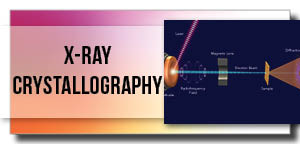
Track 6: Crystal Growth
X-beams are utilized to examine the basic properties of solids, fluids or gels. Photons interface with electrons, and give data about the vacillations of electronic densities in the matter. A run of the mill test set-up is appeared on Figure 1: a monochromatic light emission wave vector ki is chosen and falls on the specimen. The scattered power is gathered as a component of the alleged dissipating point 2θ. Versatile cooperation’s are described by zero vitality exchanges, with the end goal that the last wave vector kf is equivalent in modulus to ki. The applicable parameter to examine the collaboration is the force exchange or diffusing vector q=ki-kf, characterized by:

The scattered force I(q) is the Fourier Transform of g(r), the connection capacity of the electronic thickness r(r), which compares to the likelihood to discover a scatterer at position r in the specimen if another scatterer is situated at position 0 : flexible x-beam dissipating tests uncover the spatial relationships in the example. Little edge diffusing analyses are intended to quantify I(q) at little scrambling vectors q»(4p/l)q, with 2q going from couple of small scale radians to a ten of radians, to examine frameworks with trademark sizes running from crystallographic separations (few Å) to colloidal sizes (up to couple of microns).
- Recent Developments in Crystal Growth
- Crystal growth kinetics and mechanisms
- Crystal morphology
- Diamonds growth
- Organic Crystal Scintillators
- Phase Transitions: seeding, growth, transport
- Melt Growth 1: hydrodynamic concepts, external fields
- Melt Growth 2: microgravity and modeling
- Aqueous solution, ammonothermal growth
- Growth from melt solution, liquid phase epitaxy
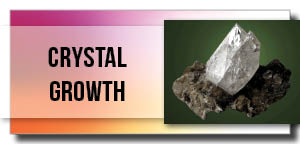
Track 7: Nuclear Magnetic Resonance Crystallography
Nuclear magnetic resonance crystallography (NMR crystallography) is a method which utilizes primarily NMR spectroscopy to determine the structure of solid materials on the atomic scale. Thus, solid-state NMR spectroscopy would be used primarily, possibly supplemented by quantum chemistry calculations (e.g. density functional theory), powder diffraction etc. If suitable crystals can be grown, any crystallographic method would generally be preferred to determine the crystal structure comprising in case of organic compounds the molecular structures and molecular packing. The main interest in NMR crystallography is in microcrystalline materials which are amenable to this method but not to X-ray, neutron and electron diffraction. This is largely because interactions of comparably short range are measured in NMR crystallography.
- Dipolar interaction
- Non-covalent interactions
- Solid-State NMR
- Crystal Structure Refinements
- Applications of NMR
- NMR spectroscopy
- NMR crystallography

Track 8: Spectroscopy
Spectroscopy is the study of the interaction between matter and electromagnetic radiation. Historically, spectroscopy originated through the study of visible light dispersed according to its wavelength, by a prism. Later the concept was expanded greatly to include any interaction with radiative energy as a function of its wavelength or frequency. Spectroscopic data are often represented by an emission spectrum, a plot of the response of interest as a function of wavelength or frequency.One of the central concepts in spectroscopy is a resonance and its corresponding resonant frequency. Resonances were first characterized in mechanical systems such as pendulums. Mechanical systems that vibrate or oscillate will experience large amplitude oscillations when they are driven at their resonant frequency. A plot of amplitude vs. excitation frequency will have a peak centered at the resonance frequency. This plot is one type of spectrum, with the peak often referred to as a spectral line, and most spectral lines have a similar appearance.Spectra of atoms and molecules often consist of a series of spectral lines, each one representing a resonance between two different quantum states. The explanation of these series, and the spectral patterns associated with them, were one of the experimental enigmas that drove the development and acceptance of quantum mechanics. The hydrogen spectral series in particular was first successfully explained by the Rutherford-Bohr quantum model of the hydrogen atom. In some cases spectral lines are well separated and distinguishable, but spectral lines can also overlap and appear to be a single transition if the density of energy states is high enough. Named series of lines include the principal, sharp, diffuse and fundamental series.
- Symmetry and Molecular Spectroscopy
- Spectroscopy and Molecular Structure
- Infrared Spectroscopy Life
- X-ray photoelectron spectroscopy (XPS)
- Small Molecule Spectroscopy and Dynamics
- Photoemission Spectroscopy
- Raman Spectroscopy
- Time-Stretch Spectroscopy
- Ultraviolet Photoelectron Spectroscopy (UPS)
- Ultraviolet visible Spectroscopy
- Vibrational circular dichroism Spectroscopy
- Dynamic Force Spectroscopy
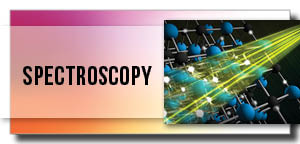
Track 9: Advances in Neutron Diffraction
Neutron diffraction or elastic neutron scattering is the application of neutron scattering to the determination of the atomic and/or magnetic structure of a material. A sample to be examined is placed in a beam of thermal or cold neutrons to obtain a diffraction pattern that provides information of the structure of the material. The technique is similar to X-ray diffraction but due to their different scattering properties, neutrons and X-rays provide complementary information: X-Rays are suited for superficial analysis, strong x-rays from synchrotron radiation are suited for shallow depths or thin specimens, while neutrons having high penetration depth are suited for bulk samples.
- Nuclear scattering
- Magnetic scattering
- Hydrogen, null-scattering and contrast variation
- Specific Applications of Neutron Scattering
- Thomson scattering

Track 10: Biological Structure Determination
Structural biology is a branch of molecular biology, biochemistry, and biophysics concerned with the molecular structure of biological macromolecules, especially amino and nucleic acids, how they acquire the structures they have, and how alterations in their structures affect their function. This subject is of great interest to biologists because macromolecules carry out most of the functions of cells, and only by coiling into specific three-dimensional shapes that they are able to perform these functions. This architecture, the "tertiary structure" of molecules, depends in a complicated way on the molecules' basic composition, or "primary structures."Hemoglobin, the oxygen transporting protein found in red blood cells.Biomolecules are too small to see in detail even with the most advanced light microscopes. The methods that structural biologists use to determine their structures generally involve measurements on vast numbers of identical molecules at the same time.
- Mass spectrometry
- NMR Spectroscopy
- Bio-Macromolecular Crystallography
- Proteolysis
- Electron paramagnetic resonance (EPR)
- Cryo-electron microscopy (cryo-EM)
- Multi-angle light scattering
- Small angle scattering
- Ultrafast laser spectroscopy
- Structure of interfaces
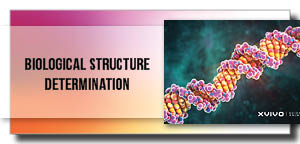
Track 11: NMR Spectroscopy vs. X-Ray Crystallography
Although they utilize different approaches, nuclear magnetic resonance (NMR) spectroscopy and x-ray crystallography comprise the two best means of analyzing protein structure and function at or near atomic resolution. The degree to which these techniques differ and complement each has been a source of long-standing debate. Do proteins amenable to structural analysis by NMR also crystallize well? Does crystallography provide better structural resolution? Is NMR protein analysis closer to the native state? Despite some similarities and differences, each technique excels where the other falls short, making protein NMR and x-ray crystallography two very complementary spectroscopic methods for high resolution analysis of protein structure and function.Below is a brief summary of the basic technical aspects of protein NMR spectroscopy as compared to x-ray crystallography. A more thorough analysis for each technique can be found in existing UC Davis Wiki pages for Nuclear Magnetic Resonance (NMR) Spectroscopy and X-ray Crystallography.In the end, protein x-ray crystallography and NMR spectroscopy are not mutually exclusive techniques; one can easily pick up where the other falls short. In analyzing NMR dynamics experiments, for example, one can greatly benefit from existing crystal structure data onto which the NMR structural data can be superimposed. Similarly, NMR structure data can be used to supplement a crystal structure with more information on the protein's dynamics, binding information, and conformational changes in solution. Because a protein that can be analyzed by NMR is not necessarily amenable to crystallization (and vice-versa), the two techniques, either alone or in conjunction with one another, serve as two of the top complementary methods for protein structure determination.
- Protein NMR Spectroscopy
- X-ray Protein Crystallography
- Data Analysis
- Protein Production
- Protein Stability and Crystallization
- Protein Size
- NMR Dynamics
- Crystallography Dynamic Structure Analysis

Track 12: Crystal Engineering
Crystal engineering is the design and synthesis of molecular solid state structures with desired properties, based on an understanding and use of intermolecular interactions. The two main strategies currently in use for crystal engineering are based on hydrogen bonding and coordination bonding. These may be understood with key concepts such as the supramolecular synthon and the secondary building unit.The term ‘crystal engineering’ was first used in 1971 by Gerhard Schmidt in connection with photodimerization reactions in crystalline cinnamic acids. Since this initial use, the meaning of the term has broadened considerably to include many aspects of solid state supramolecular chemistry. A useful modern definition is that provided by Gautam Desiraju, who in 1988 defined crystal engineering as "the understanding of intermolecular interactions in the context of crystal packing and the utilization of such understanding in the design of new solids with desired physical and chemical properties." Since many of the bulk properties of molecular materials are dictated by the manner in which the molecules are ordered in the solid state, it is clear that an ability to control this ordering would afford control over these properties.
- Non-covalent control of structure
- Design of multi-component crystals
- 2D Structures
- Polymorphism
- Crystal structure prediction
- Property design
- Crystal Nets (periodic graphs)
- Crystal Growth & Design

Track 13: Crystallography Applications
Crystallography method has been a broadly utilized device for illustration of mixes present in drain and different sorts of data acquired through structure work relationship. Albeit more point by point data from X-beam investigation has been secured from substances which are normally known to be crystalline, it has been amazing to discover substances generally considered as being non-crystalline as really having a halfway crystalline structure and that this structure can be changed by warmth treatment, weight, extending, and so forth. Casein is a case of the last class of proteins. Stewart has demonstrated that even arrangements have a tendency to accept a methodical game plan of gatherings inside the arrangement. Consequently, fluid drain ought to, and shows some sort of course of action. The mineral constituent and lactose are the main genuine crystalline constituents in dairy items that can be investigated by X-beam; in any case, intriguing basic changes have been seen in butterfat, drain powder, casein and cheddar.
- High-Resolution Charge Density Studies
- Semiconductors and Insulators
- X-ray method for investigation of drugs
- X-ray method for investigation of textile fibers and polymers
- X-ray method for investigation of bones
- Pre-clinical imaging
- Spectroscopy at Fusion Reactors
- Surface Stress Measurements
- Photo-Crystallography
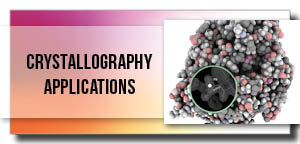
Track 14: Spectroscopy Applications
Cure monitoring of composites using optical fibers.Estimate weathered wood exposure times using near infrared spectroscopy.Measurement of different compounds in food samples by absorption spectroscopy both in visible and infrared spectrum.Measurement of toxic compounds in blood samples.Photoacoustic spectroscopy measures the sound waves produced upon the absorption of radiation.Photothermal spectroscopy measures heat evolved upon absorption of radiation.Pump-probe spectroscopy can use ultrafast laser pulses to measure reaction intermediates in the femtosecond timescale.Raman optical activity spectroscopy exploits Raman scattering and optical activity effects to reveal detailed information on chiral centers in molecules.Spin noise spectroscopy traces spontaneous fluctuations of electronic and nuclear spins.Time-resolved spectroscopy measures the decay rate(s) of excited states using various spectroscopic methods.Thermal infrared spectroscopy measures thermal radiation emitted from materials and surfaces and is used to determine the type of bonds present in a sample as well as their lattice environment. The techniques are widely used by organic chemists, mineralogists, and planetary scientists.Transient grating spectroscopy measures quasiparticle propagation. It can track changes in metallic materials as they are irradiated.
- Spectroscopy in Environmental Analysis
- Spectroscopy in Biomedical Sciences
- Spectroscopy in Astronomy
- Spectroscopy in Materials Science
- Spectroscopy in Laser-induced Fluorescence
- Atomic Emission Spectroscopy (AES)
- Atomic Absorption Spectroscopy (AAS)
- Applications in Mass Spectrometry
- Spectroscopy in the Photon Migration Regime
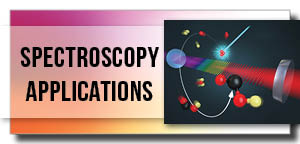
Track 15: Application of Modern Chemistry
Modern Analytical Chemistry : Modern Analytical Chemistry is used in the analysis of light energy emitted by electrons, atoms, ions, or molecules at their ground state. Modern Analytical Chemistry deals with the determination of component structure IR spectrum is used to identify the bonds when organic compound is exposed to electro-magnetic radiation.
Modern Chemistry Formulae’s : Modern Chemistry Formulae’s for an ionic substance symbolizes one system device - the easiest rate of the compound's beneficial ions (cations) and its adverse ions (anions).Modern Chemistry Formulaes is the study and use of natural analytical structural chemistry to purify various compounds. Kinetics formula can be classified as research work ,work power, work cement chemist which is contributed to develop the modern chemistry.
Modern Experimental Chemistry : Modern Experimental Chemistry fully deals with the fundamentals of kinetics and heterogeneous catalysis in modern chemistry. Modern Experimental Chemistry are used in couple cluster method for ground and existed states, geminal wave functions embedding methods for exploring potential energy.
Modern Heterocyclic Chemistry : Modern Heterocyclic Chemistry or a heterocyclic substance with a band framework is a cyclic substance that has atoms of at least two different components as associates of its rings. Modern Heterocyclic Chemistry mainly deals with the study of heterocyclic compounds it is used in the development and increasing the relevant biological targets (enzymes, modulators).
Modern Inorganic Chemistry : Modern Inorganic Chemistry deals with the study of the features and actions of inorganic and organometallic substances. Modern Inorganic Chemistry includes all substance products except the variety natural substances (carbon based substances, usually containing C-H bonds), which are the topics of natural substance make up. Modern Inorganic Chemistry has programs in every part of the substance industry–including catalysis, materials technology, pigmentation, surfactants, coverings, medication, energy, and farming.
Modern Nuclear Chemistry : Modern Nuclear Chemistry is the study of physics and chemistry of heaviest elements their nuclear properties such as structure, reaction radioactive decay. Modern Nuclear Chemistry deals with atomic process such as ionization, x-ray emission, nuclear nomenclature, survey of nuclear decay types, nuclear chemistry.
Modern Organometallic Chemistry : Modern Organometallic Chemistry is the study of substance products containing at least one connection between an atom as well as atom of a natural substance and a steel. Organometallic substance make up brings together factors of inorganic substance make up and natural substance make up. Organometallic substances are commonly used in homogeneous catalysis. The term "metalorganics" usually represents metal-containing substances missing direct metal-carbon ties but which contain natural ligands. Metal beta-diketonates, alkoxides, and dialkylamides are associate members of this modern organometallic chemistry class.
Modern Physical Organic Chemistry : Modern Physical Organic Chemistry is mainly focused on the chemical structures and their reactivity to study their organic molecules which include the study of their rates and reactions. Modern Physical Organic Chemistry has wide applications in chemical biology, bioorganic chemistry , electro-photochemistry , polymer, supramolecular chemistry, nanotechnology and drug discovery.
Modern Stoichiochemistry : Modern Stoichiochemistry is established on the law of preservation of huge where the complete huge of the reactants is equal to the complete huge of the items resulting in the understanding that the interaction among quantities of reactants and items generally type a rate of beneficial integers. Modern Stoichiochemistry studies the kinetics and Stoichiochemistry of the transition from the primary to secondary peroxidase. A hypothesis formulated that the Stoichiochemistry of regularity gene was influential in modulating the levels of expression of the targeted genus.
Modern Theoretical Chemistry : Modern Theoretical Chemistry looks for to offer details to substance and physical findings. Modern Theoretical Chemistry make up has the essential rules of science such as Coulomb's law, Kinetic power, Potential power, the virial theorem, Planck's Law, Pauli exemption concept and many others to describe but also estimate substance noticed phenomena. In order to describe a statement one has to choose the "right level of theory".
- Innovations in Mass Spectrometry techniques
- Mass Spectrometry Imaging approaches and applications
- Ion Mobility Spectrometry
- Current Brain Research with NMR Spectroscopy
- Advances in Chromatography and Crystallography
- Crystal Lattices
- Advanced Trends in Organic Chemistry
- Modern Organic Chemistry and Applications
- Structural Effects in Organic Electrochemistry
- Structural Biochemistry and Crystallography
- Coordination & Crystallographic Defects
- Macromolecular structure and function
- Polymer Chemistry
- Material Chemistry for Electrochemical capacitors
- Materials Synthesis
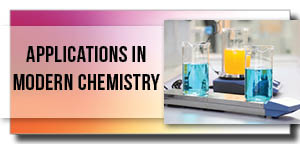
Market Analysis
SUMMARY
The International conference on Crystallography-Spectroscopy is the platform to gain or share the knowledge in the new technological developments in the field of science, engineering and technology. This conference brings together professors, researchers, scientists, students in all the areas of material science, Crystallography, Spectroscopy, Physics and Chemistry which provides an international forum for the spreading of approved research. We are honored to invite you all to attend and register for the “4th Edition of International conference on Advanced Spectroscopy, Crystallography and Applications in Modern Chemistry” which is scheduled for April 25-26, 2019 at Rome, Italy.
The organizing committee is gearing up for an exciting and informative conference program this year also which includes plenary lectures, symposia, workshops on a variety of topics, poster presentations and various programs for participants from all over the world. We invite you to join us at International conference on Crystallography-Spectroscopy, where you will be sure to have a meaningful experience with scholars from around the world. All members of the Crystallography 2019 organizing committee look forward to meeting you in Rome, Italy.
IMPORTANCE AND SCOPE
World-renowned speakers, the most recent techniques, tactics, and the newest updates in fields of Crystallography and Spectroscopy are hallmarks of this conference. Crystallography 2019 is an exciting opportunity to showcase the new technology, the new products of your company, and/or the service your industry may offer to a broad international audience. It covers a lot of topics and it will be a nice platform to showcase their recent researches on Material Science, Crystallography, Spectroscopy, Physics and Chemistry.
The study focusses on the processing of new materials which facilitates its applications to the next generation of Students, Engineers and its high marketability has a great impact on the economy of the country. In the new decade the sustainability and influence on the environment lie in the core of the material development.
WHY ROME?
Rome is the capital city of Italy. It is the most populous region, urban zone and metropolitan area in Europe. A heady mix of haunting ruins, awe-inspiring art and vibrant street life, Italy’s hot-blooded capital is one of the world’s most romantic and inspiring city to visit.
Rome, is a leading global city, with strengths in the arts, commerce, education, entertainment, fashion, finance, healthcare, media, professional services, research and development, tourism and transport all contributing to its prominence. It is one of the world’s leading financial centers and has the eighth largest metropolitan area GDP in the world depending on measurement. One of the most famous fountains in the world, the Trevi Fountain is in Rome. It is the world’s most-visited city as measured by international arrivals and is the world’s most romantic city as named by tourists. Michelangelo may be one of the most famous artists of all time. And many of his most famous works are in Rome. On your visit to Vatican City alone, you can see Michelangelo's paintings in the Sistine Chapel, and his sculpture of the Pietà. Rome is an immediate proximity to other sites, cities and beaches. Rome's Fiumicino international airport is one of the main airports in Italy and in Europe.
Rome has a diverse range of peoples and cultures, and more than 300 languages are spoken within its boundaries. It is a major center of higher education teaching and research and its 52 universities form the largest concentration of higher education in Italy. Rome contains four World Heritage Sites: Coliseums-also known as Flavian Amphitheatre, St. Peter's Basilica, Sistine Chapel and Pantheon also Capitoline and Vatican Museums. Other famous landmarks include Bocca della Verità, Spanish Steps, Piazza Venezia, Altare della Patria, Trajan's Market, Doria Pamphili Gallery, MAXXI, Sant'Ignazio Church, Rome and numerous other Roman architectures.
MARKET ANALYSIS
X-Ray Crystallography Market: The global proteomics market is estimated to reach USD 21.87 Billion by 2021, at a CAGR of 11.7% during the forecast period. The global market exhibits potential for significant growth and is propelled by the increasing need for personalized medicine, R&D expenditure, technological advancements, and increased funding for proteomics projects. However, a few pivotal factors hampering the growth of this market include the reduced funds in key markets, sequestration cuts in the U.S. and reduced funds for proteomics research, high cost of tools and equipment, and dearth of skilled researchers.
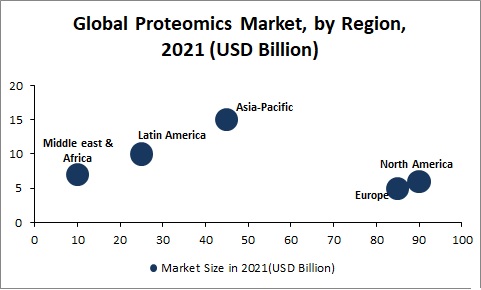
Protein Crystallization & Crystallography Market: The protein crystallography market is segmented on the basis of technologies, applications, products (instruments and reagents), and end users. Based on technology, the global market is further segmented into protein purification, protein crystallization, protein crystal mounting, and protein crystallography. Protein crystallization is the most crucial and the largest segment, and it accounted for 47% of the market in 2013. On the basis of products, the protein crystallization market has segments such as reagents/consumables and instruments. Reagents/consumables accounted for 85% of the protein crystallization & crystallography product market. It is expected to grow at a high CAGR of 11% over the forecast period.
Mass Spectrometry Market: The global mass spectrometry market is expected to reach USD 5.27 Billion by 2022 from USD 3.68 Billion in 2017, at a CAGR of 7.4%. The growth of this market is majorly driven by technological advancements in mass spectrometry, government initiatives for pollution control and environmental testing, increasing spending on pharmaceutical R&D across the globe, government regulations on drug safety and growing petrochemical industry. However, the high cost of equipment is likely to restrain the growth of the market during the forecast period.

Molecular Spectroscopy Market: The global molecular spectroscopy market is expected to reach USD 6.85 Billion by 2022 from USD 4.98 Billion in 2017, at a CAGR of 6.6%. The growth of this market is majorly driven by food safety concerns, the growth of the pharmaceutical and biotechnology industry, technological advancements in molecular spectroscopy and application of molecular spectroscopy in environmental screening. However, the high cost of equipment is likely to restrain the growth of the molecular spectroscopy market during the forecast period.
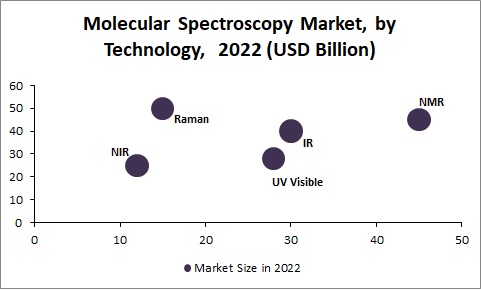
UV/Visible Spectroscopy Market: The UV/visible spectroscopy market is poised to reach USD 1,163.2 Million by 2021, growing at a CAGR of 4.3 % during the forecast period of 2016 to 2021. The growth of the market can be attributed to application of UV/visible spectroscopy in environmental testing; growing use in the pharmaceuticals and biotechnology industries; technological advancements in instrumentation; and increasing need for food analysis. In the coming years, the market is expected to witness the highest growth rate in the Asia-Pacific region. North America is expected to account for the largest share of the global UV/visible spectroscopy market in 2016. However, longevity of instruments and dearth of skilled professionals is likely to restrain the growth of the market to a certain extent during the forecast period.
Major Crystallography Associations around the Globe
- British Crystallography Association (BCA)
- Indian Crystallographic Association (ICA)
- European Crystallographic Association (ECA)
- French Crystallographic Association (FCA)
- Asian Crystallographic Association (ACA)
- Turkish National Crystallographic Association
- Croatian Crystallographic Association
- Czez and Slovak Crystallographic Association
- International Union of Crystallography
- German Society for Crystallography
- German Mineralogical Society
- Korean Crystallographic Association

Statistical Analysis of Crystallography Associations
Major Spectroscopy Associations around the Globe
- American Society for Mass Spectrometry (ASMS)
- British Mass Spectrometry Society (BMSS)
- Chinese American Society for Mass Spectrometry (CASMS)
- French Society for Mass Spectrometry (SFSM)
- German Society for Mass Spectrometry (DGMS)
- International Mass Spectrometry Foundation (IMSF)
- Russian Society for Mass Spectrometry (VMSO)
- Swiss Group for Mass Spectrometry (SGMS)
Target Audience:
- Materials Scientists /Research Professors /Spectroscopic Experts
- Physicists /Chemists
- Junior / Senior research fellows of Materials Science /Spectroscopy /Chemical Engineering
- Directors of Materials/ Nano-Technologies /Spectroscopy companies
- Members of different Materials Science, Physics, Chemistry, Spectroscopy, Crystallography Associations
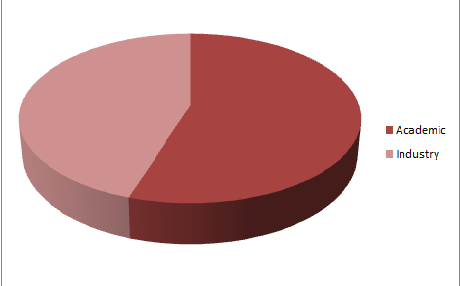
Graphical Representation of Attendance from different sectors
The global market analysis report in terms of graphical representation:
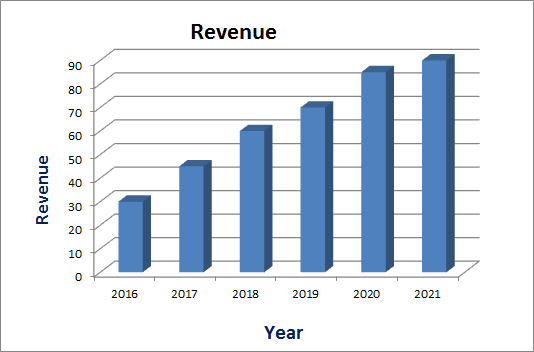
Statistical Analysis of Crystallography Global Market Revenue
Learn More
LEARN MORE
Crystallography Related Conferences:
Materials Science Conferences | 4th International Conference on Crystallography & Novel Materials | November 19-20, 2018 Bucharest, Romania | Crystallography Conferences 2019 USA | Crystallography Conferences 2019 Asia | Graphene Conferences | Chemistry Conferences | X-Ray Crystallography Conferences | Mineralogy Conferences | Crystallography Conferences | IRS — 2018 19th International Radar Symposium | 20-22 Jun 2018 | Bonn, Germany | Crystallography Conferences 2019 USA | Crystallography Conferences 2019 Asia | Graphene Conferences | Condensed matter physics Conferences | Crystallography Conferences | Materials Science Conferences | Chemistry Conferences | X-Ray Crystallography Conferences | 4th International Conference on Genetic and Protein Engineering : Market, Technology & B2B | December 05-06, 2018 Chicago | Atlanta, Georgia, USA | Crystallography Conferences 2019 USA | Crystallography Conferences 2019 Asia | Graphene Conferences | X-Ray Crystallography Conferences | Condensed matter physics Conferences | Crystallography Conferences | Materials Science Conferences | Mineralogy Conferences | Chemistry Conferences | Gordon Research Seminar — Crystal Engineering | 23 Jun 2018 - 24 Jun 2018 | Newry, ME, United States | Crystallography Conferences 2019 USA | Crystallography Conferences 2019 Asia | X-Ray Crystallography Conferences | Materials Science Conferences | Gordon Research Conference — Crystal Engineering | 24 Jun 2018 - 29 Jun 2018 | Newry, ME, United States | Crystallography Conferences 2019 USA | Crystallography Conferences 2019 Asia | X-Ray Crystallography Conferences | Graphene Conferences | Condensed matter physics Conferences | Mineralogy Conferences | Chemistry Conferences | Chemistry Conferences | Methods and applications of Crystal Structure Prediction: Faraday Discussion | 11 Jul 2018 - 13 Jul 2018 | Cambridge, UK | Crystallography Conferences 2019 USA | Crystallography Conferences 2019 Asia | Mineralogy Conferences | Materials Science Conferences | Chemistry Conferences | Crystallography Conferences | X-Ray Crystallography Conferences | 4th International Conference on Crystallography & Novel Materials | November 19-20, 2018 Bucharest, Romania | Crystallography Conferences 2019 USA | Crystallography Conferences 2019 Asia | X-Ray Crystallography Conferences | Crystallography Conferences | Graphene Conferences | Materials Science Conferences | Chemistry Conferences | 3rd International Conference on Applied Crystallography | November 07-08, 2018 | Atlanta, Georgia, USA | Crystallography Conferences 2019 USA | Crystallography Conferences 2019 Asia | Chemistry Conferences | X-Ray Crystallography Conferences | Mineralogy Conferences | Crystallography Conferences | Gordon Research Seminar — Colloidal Semiconductor Nanocrystals | 14 Jul 2018 - 15 Jul 2018 | Graphene Conferences | Mineralogy Conferences | Crystallography Conferences | 4th International Conference on Genetic and Protein Engineering : Market, Technology & B2B | December 05-06, 2018 Chicago | Crystallography Conferences 2019 USA | Crystallography Conferences 2019 Asia | Materials Science Conferences | X-Ray Crystallography Conferences | Condensed matter physics Conferences | Mineralogy Conferences | Gordon Research Conference — Colloidal Semiconductor Nanocrystals | 15 Jul 2018 - 20 Jul 2018 | Bryant University, Smithfield, RI, United States | Graphene Conferences | Crystallography Conferences | Condensed matter physics Conferences | Materials Science Conferences | Chemistry Conferences | Mineralogy Conferences | Graphene Conferences | X-Ray Crystallography Conferences | Crystallography Conferences | Condensed matter physics Conferences | Mineralogy Conferences | XAFS18 — 17th International Conference on X-ray Absorption Fine Structure | 22 Jul 2018 - 27 Jul 2018 | Cracow, Poland | Crystallography Conferences 2019 USA | Crystallography Conferences 2019 Asia | Materials Science Conferences | Mineralogy Conferences | X-Ray Crystallography Conferences | Graphene Conferences | Gordon Research Seminar — Diffraction Methods in Structural Biology | 28 Jul 2018 - 29 Jul 2018 | Bates College, Lewiston, ME, United States | Crystallography Conferences 2019 USA | Crystallography Conferences 2019 Asia | Chemistry Conferences | Graphene Conferences | X-Ray Crystallography Conferences | Materials Science Conferences | Condensed matter physics Conferences | Gordon Research Conference — Diffraction Methods in Structural Biology | 29 Jul 2018 - 03 Aug 2018 | Chemistry Conferences | Mineralogy Conferences | Materials Science Conferences | Crystallography Conferences | Condensed matter physics Conferences | X-Ray Crystallography Conferences | Bates College, Lewiston, ME, United States | Crystallography Conferences 2019 USA | Crystallography Conferences 2019 Asia | Condensed matter physics Conferences | XRM2018 — 14th International Conference on X-ray Microscopy | 19 Aug 2018 - 24 Aug 2018 | Crystallography Conferences | Materials Science Conferences | Chemistry Conferences | Saskatoon, Saskatchewan, Canada | Mineralogy Conferences | Condensed matter physics Conferences | ECM31: 31st European Crystallographic Meeting | 22 Aug 2018 - 27 Aug 2018 | Oviedo, Spain | Materials Science Conferences | Mineralogy Conferences | Graphene Conferences | 3rd International Conference on Applied Crystallography | November 07-08, 2018 | Atlanta, Georgia, USA | Crystallography Conferences | X-Ray Crystallography Conferences | 4th International Conference on Crystallography & Novel Materials | November 19-20, 2018 | Bucharest, Romania | Materials Science Conferences | Mineralogy Conferences | Crystallography Conferences | 2018 Winter School of Cryo-EM Workshop | January 3-5, 2018, Tempe, AZ, UK | Real-time cryo-EM image processing with SIMPLE | January 9-10, 2018 | Oxford, UK | Condensed matter physics Conferences | CCP4 Study Weekend: Multi and Serial Crystal Data Collection and Processing | January 10-12, 2018 | Nottingham, UK | Crystallography Conferences 2019 USA | Crystallography Conferences 2019 Asia | Chemistry Conferences | Materials Science Conferences | Nanotechnology: From Materials To Science | February 15-16, 2018 | Prague, Czech Republic | Crystallography Conferences 2019 USA | Crystallography Conferences 2019 Asia | Chemistry Conferences | Materials Science Conferences | Crystallography Conferences | Graphene Conferences | 1st CCP4/BGU Crystallography Workshop | February 18-23, 2018 | Beer-Sheba, Israel | Materials Science Conferences | Condensed matter physics Conferences | Mineralogy Conferences | Graphene Conferences | 4th International Conference on Crystallography & Novel Materials | November 19-20, 2018 Bucharest, Romania | Mineralogy Conferences | Materials Science Conferences | Condensed matter physics Conferences | Crystallography Conferences | 2nd Pan African Conference on Crystallography (PCCr-2) | Ghana 28th Jan 2019 - 2nd Feb 2019 | Graphene Conferences | Condensed matter physics Conferences | The 19th International Conference on Crystal Growth and Epitaxy (ICCGE - 19) | United States 28th Jul 2019 - 2nd Aug 2019 | Crystallography Conferences | Condensed matter physics Conferences | Mineralogy Conferences | X-Ray Crystallography Conferences | Chemistry Conferences | Graphene Conferences | Crystallography Conferences 2019 USA | Crystallography Conferences 2019 Asia |
Crystallography Universities:
- University of Southampton
- University of Manchester
- Durham University
- Heriot-Watt University
- University of Glasgow
- University of Bristol
- Princeton University
- Newcastle University
- University Of Copenhagen
- University of Oxford
- University of Strathclyde
- University of Liverpool
- Pennsylvania State University
- National Crystallography Service
- Tel Aviv University
- The University Of Utah
- University of Cincinnati
- Queen's University
- The University of Adelaide
- University of Michigan
- University of Leicester
- University of Kentucky
- University of Calgary
- Aarhus University
- University College Cork
- Institute of Crystallography
- Utrecht University
- University of Antwerp
- University of Pittsburgh
- University of Florida
Crystallography Societies and Associations:
Europe:
- Czechoslovak Association for Crystal Growth
- Czech and Slovak Crystallographic Association
- European Crystallographic Association
- European High Pressure Research Group
- European Mineralogical Union
- European Neutron Scattering Association
- European Powder Diffraction Conference (EPDIC)
- Suomen kansallinen kristallografian komitea
- Finnish National Committee for Crystallography
- Association Française de Cristallographie
- Societe Francaise de la Neutronique
- Société Française de Mineralogie et Cristallographie
- Deutsche Gesellschaft fur Kristallographie
- Deutsche Gesellschaft fur Kristallzuchtung und Kristallwachstum e. V.
- Deutsche Mineralogische Gesellschaft
- Hellenic Crystallographic Association
- Irish Crystallographic Association
- Cumann Criostalaghrafaiochta na hEireann
- Associazione Italiana Cristallografia
- Societa Italiana Luce di Sincrotrone
- Italian Synchrotron Radiation Society
- Society of Chemists and Technologists of Macedonia
- Nederlandse Vereniging voor Kristallografie
- Committee of Crystallography of the Polish Academy of Sciences
- Polish Crystallographic Association
- Polish Synchrotron Radiation Society
- Polish Society for Crystal Growth
- Russian National Committee for Crystallography
- Serbian Crystallographic Society
- Czechoslovak Association for Crystal Growth
- Czech and Slovak Crystallographic Association
- Comité Espanol de Cristalografia
- Grupo Especializado de Cristalografia y Crecimiento Cristalino
- Swedish Neutron Scattering Society
- Swiss Society for Crystallography
- Swiss Neutron Scattering Society
- Turkish National Crystallographic Association
- British Association for Crystal Growth
- British Crystallographic Association
- The Mineralogical Society of Great Britain and Ireland
USA:
- American Association for Crystal Growth
- American Crystallographic Association
- Mineralogical Society of America
- Pittsburgh Diffraction Society
- US National Committee for Crystallography
- Asociacion Argentina de Cristalografia
- Associaçao Brasileira de Cristalografia
- Bulgarian Crystallographic Society
- Croatian Crystallographic Association
- Croatian Association of Crystallographers
- International Union of Crystallography
- International Union of Geological Sciences
- Society of Chemists and Technologists of Macedonia
- Sociedad Mexicana de Cristalografía
- Association Marocaine de Cristallographie
- South African Crystallographic Society
Asia-Pacific:
- Asian Crystallographic Association
- Society of Crystallographers in Australia and New Zealand
- Canadian Division - American Crystallographic Association
- American Crystallographic Association
- Canadian National Committee for Crystallography
- Chinese Crystallographic Society
- Indian Crystallographic Association
- Clay Minerals Society
- International Mineralogical Association
- International Organization for Biological Crystallization
- Japan Association of Mineralogical Sciences
- The Crystallographic Society of Japan
- Korean Crystallographic Association
- Pakistan Association of Crystallography
Crystallography Journals
- Acta Crystallographica (A, B, C, D, E and F series)
- Advanced Materials
- Advanced Energy Materials
- Advanced Engineering Materials
- Advanced Functional Materials
- Advanced Optical Materials
- Bulletin of Materials Science
- Chemistry of Materials
- Computational Materials Science
- Crystal Growth & Design
- Journal of the American Ceramic Society
- Journal of Applied Crystallography
- Journal of Colloid and Interface Science
- Journal of Materials Chemistry - A, B, and C
- Journal of Modern Materials
- Journal of Materials Research and Technology
- Journal of Physical Chemistry B | Materials
- Materials and Structures
- Materials Chemistry and Physics
- Materials Research Letters
- Modeling and Simulation in Materials Science and Engineering
- Nature Materials
- Physical Review B
- Progress in Materials Science
- Science and Technology of Advanced Materials
- Structural and Multidisciplinary Optimization
- Structural Science Crystal Engineering Materials
- Structural Chemistry
- Structural Biology
- Crystallographic Communications
- Structural Biology Communications
- Journal Of Applied Crystallography
- Journal Of Synchrotron Radiation
- Crystallography Reviews
- Journal of Chemical Crystallography
- CrystEnggComm
- Crystal Growth & Design
- Engineering of Crystalline materials properties Crystal Research and Technology
- Journal of Structural Chemistry
- Crystallography Reports
- Crystal Growth & Design
- Engineering of Crystalline materials properties
- Journal of Applied Crystallography
- Journal of Molecular Graphics & Modelling
- Photonics & Nanostructures - Fundamentals & Applications
- Progress in Crystal Growth & Character. of Materials
- Liquid Crystals
Crystallography Companies in Europe
- Crysalin
- SARomics Biostructures
- BioCryst Pharmaceuticals, Inc.
- NTRC
- GratXray
- Novatlantis ltd
- NovoMOF
- InterAx Biotech Ltd
- Advanced Accelerator Technologies AG
- 4Quant
- Excelsus Structural Solutions
- Hydromethan AG
- Expose GmbH
- SwissNeutronics AG
- DECTRIS AG
- EULITHA AG
- The Scripps Research Institute
- PDB
- INCOATEC
- JANSI
- Rayonix
- ZINSSER ANALYTIC
- XOS
- WYATT
- UHV Design
- TriTek Corp.
- Photonic Science Limited
- Princeton Instruments
- Sigray
- Solid State Analytics
- South Bay Technology
- SSCI
- STOE
- TECAN
- Triana Sci & Tech
- Zinsser Analytic
- Charles river
- ANATRACE
- Covestro
- Industrial Quick Search
- Industrial Leaders
- Long Island High Technology Incubator, Inc.
- MacRAE'S Blue Book
- ZYCON
- Jaggaer
- ALLIED METAL COMPANY
- Alcoa
- The Aluminum Association
- ClouDNS
- EABAA
- Kaiser Aluminum
- Metal Matrix Cast Composites
- All Metals & Forge Group
Crystallography Companies in USA
- MiTeGen
- U-Protein Express BV
- New TEC
- Serero
- proteros biostructures
- Astex Pharmaceuticals
- Structure Based Design, Inc.
- Aglient
- Art Robbins Instrument
- ABCR
- Unchained labs
- HUBER
- BRUKER
- INCOATEC
- Cambridge Crystallographic Data Centre
- Jan Scientific, Inc.
- CSD
- ICDD
- Mosaic Distribution LLC
- OlexSys
- ttplabtech
- HAMPTON RESEARCH
- OxfordCryosystems
- DECTRIS
- ACA
- Jena
- Bioscience
- marXperts
- European Crystallographic Association
- Crystal Impact
- fisherscientific
- DS BIOVIA
- ADC
- Agilent
- Antibodies
- AXCO
- Anton Paar
- Miramodus Moleculer Models
- Unchained
- BIO-RAD
- Calidris
Crystallography Companies in Asia
- Molecular Dimensions
- COD
- CRYO INDUSTRIES
- Cox Analytical Systems
- Crystal Logic
- CystalDesigner
- CrystalMaker Softwar
- CRYSTRAN
- Diffraction Technology pty ltd
- DOUGLAS Instrument
- DECTRIS
- Edmund Buhler GmbH
- EXORGA INC.
- Hiltonbrooks
- Hampton research
- GILSON
- FORMULATRIX
- HUBER
- INEL
- INO
- J.SCHNEIDER
- Jena Bioscience
- Jordan Valley
- Klinger Educational
- LaboSoft Company
- LINKAM SCIENTIFIC INSTRUMENTS
- MALVERN
- McPHERSON
- REALICITY CORPORATION
- Molecular Dimensions
- MOXTEK
- MSI
- MVB Scientific
- PANalytical
- halo labs
Past Conference Report
Crystallography 2018 Report
3rd Edition of International conference on Advanced Spectroscopy, Crystallography and Applications in Modern Chemistry was held on June 04-05, 2018 in London, UK with the presence of professional researchers, scientists involved in the development of high-quality education & research in all aspects.
Crystallography 2018 witnessed an amalgamation of peerless speakers who enlightened the crowd with their knowledge and confabulated on various topics related to the field of Materials Science, Crystallography, Spectroscopy and Modern Chemistry. The highly exalted conference hosted by EuroSciCon was marked with the attendance of renowned and brilliant researchers, business delegates and talented student communities representing more than 20 countries around the world. The conference has tried grounding every aspect related to Crystallography and Spectroscopy, covering all the possible research areas.
The conference aimed a parallel rail with theme “Exploring the Novel Enhancements in the field of Modern Chemistry - Crystallography and Spectroscopy”. The meeting engrossed a vicinity of cognizant discussions on Materials Science, X-ray Crystallography, Spectroscopy and Modern Chemistry. The two days event implanted a firm relation of upcoming strategies in the field of Crystallography- Spectroscopy with the scientific community.
We are thankful to all our speakers for encouraging and supporting us to conduct the conference and catapulting the same to pinnacle of success.
The Organizing Committee would like to thank the moderator: Mr. Nicolas Chrysochos, University of Greifswald, Germany for his valuable contribution which resulted in smooth functioning of the conference.
The meeting was embarked with an opening ceremony followed by Keynote Sessions and followed by special sessions and series of lectures delivered by Honorable Guests and members of the Keynote forum. The highlights of the meeting were the eponymous lectures, delivered by:
Alastair Lawson, UCB, Slough, UK
Anastasia Vyalikh, TU Bergakademie Freiberg, Germany
Andrzej Grzechnik, RWTH Aachen University, Germany
Antonio Salituro, LGC Limited, UK
Aroa Moran Ruiz, University of the Basque Country, Spain
Daniel Lynch, Exilica Limited, UK
Edward Jimenez, Universidad Central del Ecuador, Ecuador
Henrich H. Paradies, Jacobs-University, Germany
Jan Rohlicek, Institute of Physics ASCR, Czech Republic
Marie-Helene Lemee-Cailleau, Institut Laue Langevin, France
Martin Meven, RWTH Aachen University, Germany
Mingxing Zhang, University of Queensland, Australia
Monica Ceretti, Institute Charles Gerhardt Montpellier, France
Nicolas Chrysochos, University of Greifswald, Germany
Nikolayzz Bogolyubov, Mathematical Institute of the RAS, Russia
Olga B Lapina, Novosibirsk State University, Russia
All of them provided their fruitful contributions in the form of highly informative presentations and made the conference a top mark one.
EuroSciCon is prerogative to thank the Organizing Committee Members, Keynote speakers and Chairs on transcribing the plenary sessions in a diversified and variegate manner to make this conference a desirable artifact.
With the grand success of Crystallography 2018, we are glad to announce our next upcoming conference “4th Edition of International conference on Advanced Spectroscopy, Crystallography and Applications in Modern Chemistry” which is going to be held in Berlin, Germany during April 18-19, 2019.
Bookmark your dates…
Hoping to meet you again coming year at Berlin!!!

